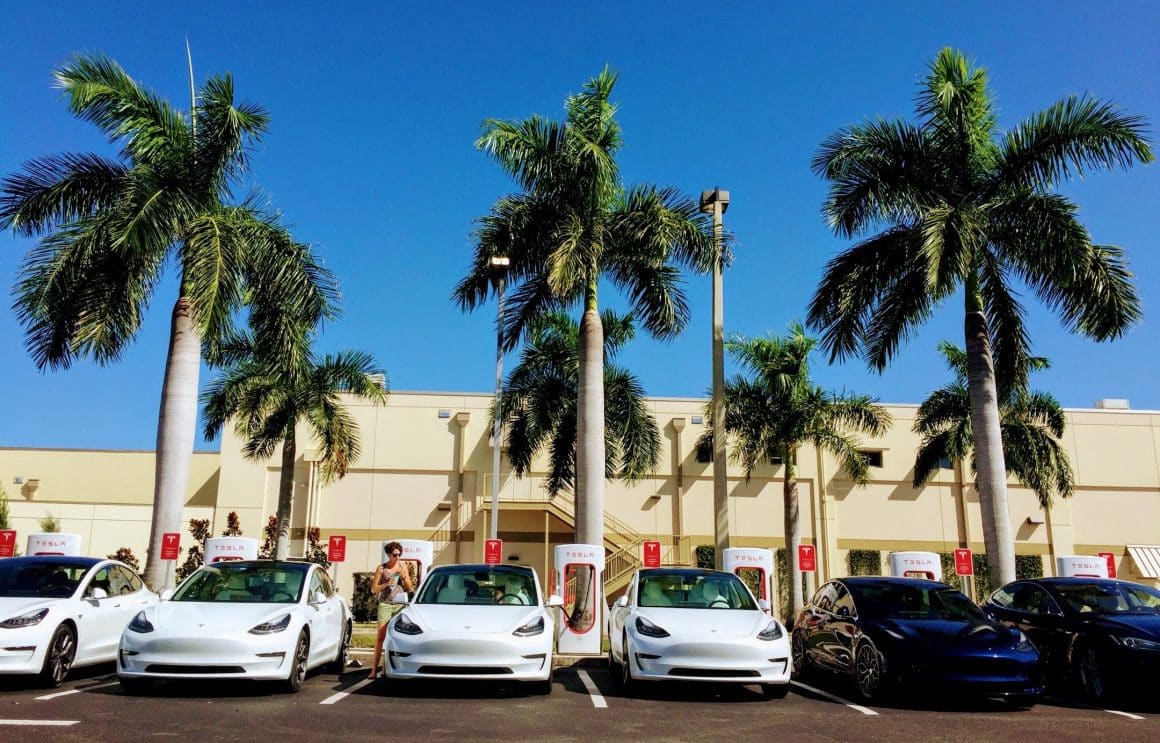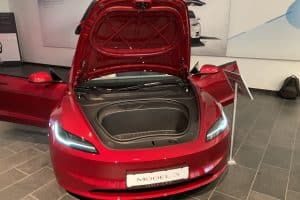Some analysts say that we are seeing one of the first appreciating assets for a car that isn’t an antique or collector’s edition vehicle. That asset is a Tesla. Teslas hold their value, that’s for sure, and many used Teslas are gaining value upon trade-in.
With the popularity and strong demand of the Tesla Model 3 and Model Y, the new car prices of Tesla models are increasing. It seems likely that this trend will continue as Tesla catches up with demand from customers, and even afterwards, as Tesla technology innovations generate even more excitement about being part of the Tesla family and as more “Full Self Driving” features roll out.
Right now, there are more people who want a Tesla than there are Tesla vehicles available. I know — my husband and I just ordered a Tesla Model Y, and the targeted delivery date is December. Sure, we’re hoping that the wait may allow us to benefit from legislation that reopens the Tesla tax credit. According to the New York Times, Democrats intend to build significant climate programs into a second infrastructure bill, including a provision that would include more tax incentives for consumers to buy electric vehicles. Subtracting $7500 from our upcoming 2021 tax payments would definitely be an added perk to buying a new Tesla.
Yet, in all likelihood, we would have chosen a Model Y from existing new car stock. We were ready to become buyers, right now. The problem was that there weren’t any ready-to-go new Teslas available when we looked at the Tesla website for existing stock.
We also looked at the inventory of used Model 3s online, hoping to expedite our Tesla purchase. It seems illogical, but a used Tesla seems to cost nearly as much as a new one. Keeping in mind that any used vehicle comes with an uncertain driver history, miles accumulated, and daily wear and tear, we weren’t convinced.
We decided to hold off and wait a few months for a shiny new Model Y. Our Tesla will be here soon enough, and we have waited this long to make this decision, anyway. There are consequences to delaying decisions, as we are now keenly aware.
The Paradox of Logic vs. Emotion with Legacy Vehicles
There are many reasons that used Teslas are advertised at near or above their original sale price. Just look back to the last time you decided to buy a new vehicle.
Be honest — it’s happened to you. You got caught up in the emotion of buying a new vehicle and rationalized the monthly costs as one component of your larger lifestyle. But then, as soon as you drove it off the lot and down the road, you were seeing a car worth little more than wholesale value, and the wholesale value is always less than the original retail value of the car. For a brand new car, this initial depreciation can be in the thousands of dollars.
It’s happened to us all.
New cars depreciate faster than used cars, believe it or not, with the value of a new car typically dropping by over 20% after only one year of ownership. A new car depreciates or loses value almost immediately after you drive it off a dealer’s lot. While different cars depreciate at different rates, it’s a commonly accepted deduction that a new car will lose approximately 20% of its value in the first year and 15% each year after that until, after 10 years, it’s worth around 10% of what it originally cost. Afterward, the value continues to depreciate by 10% or so each year after that. So, 5 years down the road (pun intended), your car could be worth roughly half of what you initially paid for it.
That hurts, considering the costs of interest tacked onto your personal car loan. Bankrate describes that total principal paid of $15,000 would incur an additional $1,172 of interest paid. And, let’s be honest: no one buys a new car for $15,000 anymore, so double those amounts. This means that a $30,000 vehicle will be worth $24,000 after the first year, $20,400 after the second year, and $17,340 after the third year.
In contrast, Teslas hold their value at an almost unheard-of level. In fact, data indicate that the Tesla Model 3 can retain its resale value over 5 times better than all other electric cars and about 4 times better than all cars in general.
Full Self Driving will Help Teslas Hold their Value
Tesla’s Full Self Driving (FSD) capability in the likely near future is another factor that sets it apart from other vehicles — EVs or otherwise. This is game-changing technology which will approach Level 5 autonomy. It will be truly unique in the original sense of that word, so that the value of so equipped Tesla vehicles is going to increase drastically.
Tesla Model 3 and Model Y vehicles equipped with FSD capability in 5 years may even sell for double what they cost now. That would mean around a $70,000 base Model 3 version and an $80,000 base Model Y version.
If you’re not ready for the $10,000 lift of FSD, don’t despair. Tesla’s new subscription plan is available for owners of Tesla models using the company’s Full Self-Driving computer 3.0 or newer hardware. Tesla started placing FSD computer 3.0 in its vehicles in 2019, and the company also offers a complimentary upgrade to the newer setup for older models equipped with the earlier FSD computer 2.0 or 2.5 hardware.
Tesla’s Special Buying Experience
How is the high valuation affecting the way that Tesla promotes and sells its autos?
If you’ve ever been to a Tesla showroom, you know what an alluring experience this is. Usually set in the high rent districts and flanked by elite storefronts that cater to the hoighty toighty, these sites have featured the wonder of Teslas. There are skeletons and battery displays; glittering Models S, X, 3, and Y to touch and caress; opportunities to ask questions and get educated on the Tesla lifestyle.
What there is not, however, in most Tesla showrooms is the pushy salesperson or the opportunity to buy a Tesla then and there. That’s because many states still prohibit direct-to-the-customer sales from the manufacturer, a remnant of antiquated US legislation that prohibits direct manufacturer auto sales in many states. Instead, franchise laws require that new cars can only be sold by independent dealers.
Two years ago, Tesla CEO Elon Musk announced plans to shutter most Tesla showrooms. Yet, today Tesla seems still to be growing its infrastructure, with 152 new Tesla store and service locations launched in the past year, a 34% growth. That seems to be an indicator that Tesla’s growth, expected to be even faster than that, is forecast to be strongly supported through online sales and without the target market of those with the highest income to which high-end malls appeal.
Tesla dominates the US all-electric auto market through sales of the Tesla Model 3 and Tesla Model Y. While it’s fun to be an early adopter, Tesla has proven that its all-electric models can hold up to tests of road trips, family use, and commuter traffic. Teslas hold their value because they’re reliable trend-setters — and, oh yeah, they help to fight the climate crisis.





